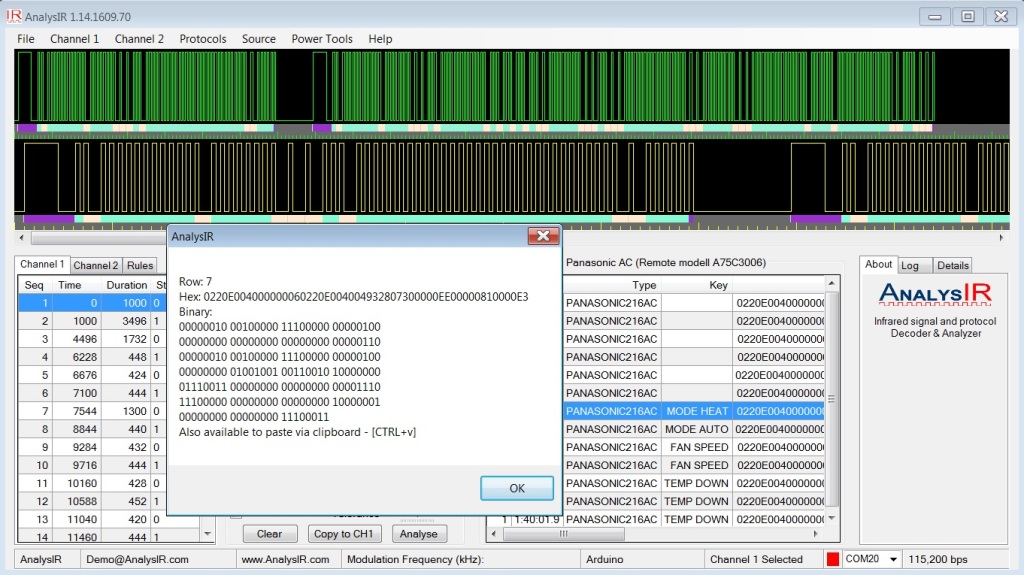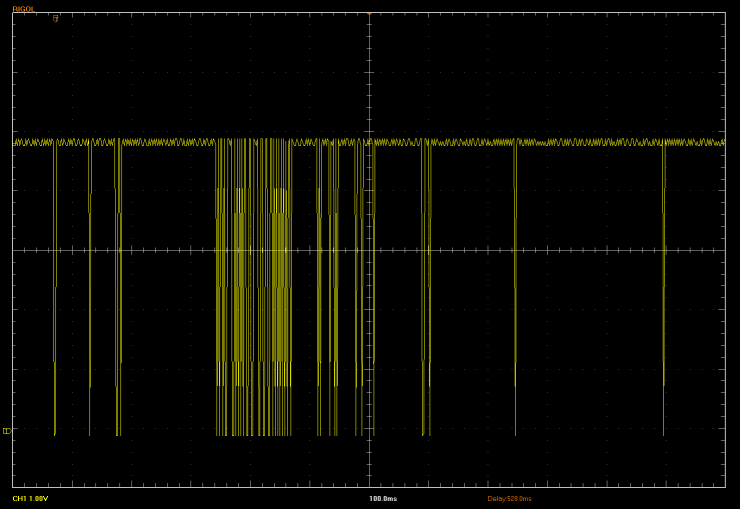In Part 1 of this series, we demonstrated how to send signals using simple Infrared PWM on Arduino. In this Part 2 post we look at sending RAW IR signals – specifically a RAW NEC signal and a longer RAW Mitsubishi Air Conditioner signal. We have also improved the method shown in Part 1 due to some issues we identified when sending ‘real’ signals versus the ‘test’ signal we used before. (More on that later). In Part 3, we will take the signals from this post and show how to send them using their binary (or Hex) representation, which saves lots of SRAM.

Continue reading Simple Infrared PWM on Arduino, Part 2- RAW IR Signals








